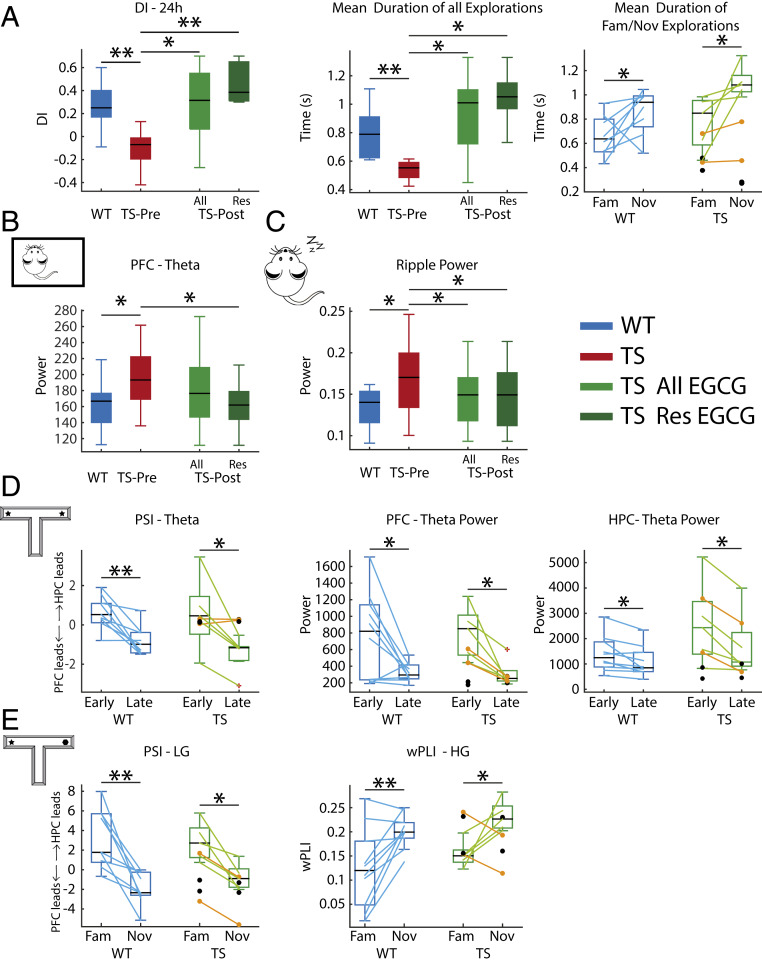Fig. 4.
Chronic oral EGCG rescues memory impairment and corrects several prefrontal–hippocampal disordered neurodynamics in Ts65Dn mice. (A) EGCG increased DIs in six (Res, responders only) of eight (All, responders and nonresponders) treated TS mice. In all panels, orange dots correspond to the two EGCG nonresponders, whereas black dots represent the two TS control mice that only received water. Corresponding measures obtained during the baseline period in WT mice are shown for reference. DIs were normalized in TS mice because individual explorations were longer, particularly when visiting novel objects. (B) EGCG reduced amplified PFC theta oscillations in responder mice to WT levels during quiet wakefulness. (C) EGCG reduced amplified ripple power in all treated mice to WT levels during NREM sleep. (D) During the familiarization phase, EGCG promoted a consistent PFC to HPC flow at theta in TS mice and proper decreases of theta power in PFC and HPC during the late visits to objects. (E) During the 24 h test, EGCG promoted a correct HPC to PFC flow at low gamma (LG) in TS mice during memory retrieval. In addition, PFC-HPC high gamma (HG) phase synchronization was rescued. The effects of EGCG on all neural signals recorded in TS mice across brain states are summarized in SI Appendix, Tables S2 and S4. *P ≤ 0.05, **P ≤ 0.01.

